Title Text
University of Delaware
Department of Physics and Astronomy
Biden School of Public Policy and Administration
Data Science Institute
Rubin Observatory Construction Project - Deputy Project Scientist
Rubin Transients and Variable Stars Science Collaboration
federica bianco - Associate Professor
(she/her)
vicky scowcroft (cosmology lectures)
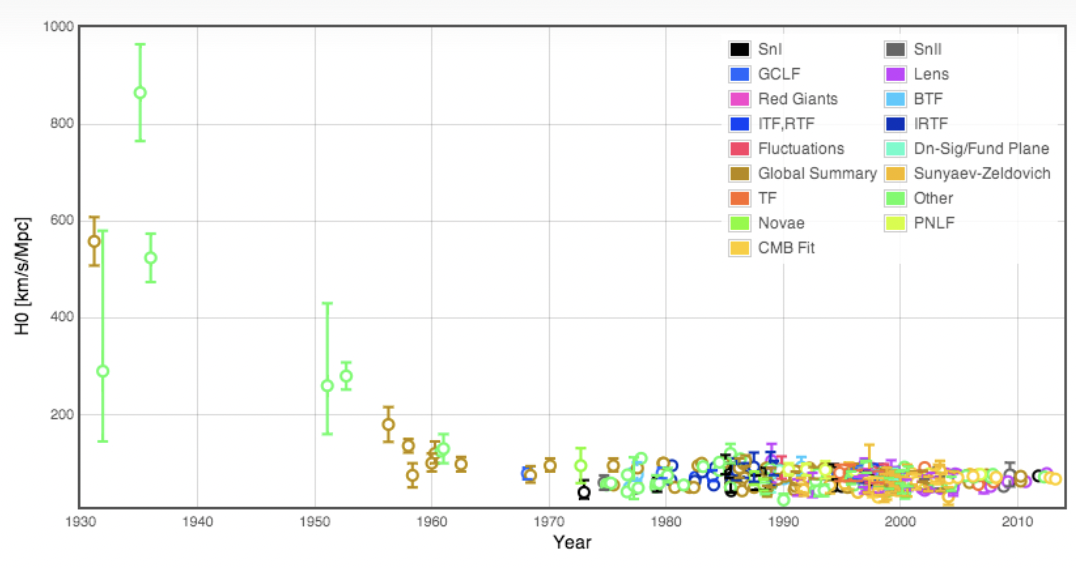
H0 measurements over time
Hubble, 1929
75
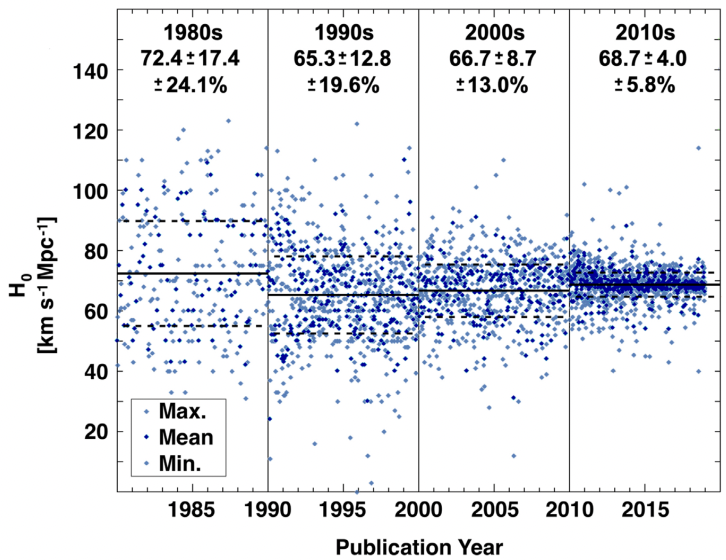
H0 measurements over time
~1000 SNe

adapted from Freedman et al. 2017 & Perivolaropoulos and Skara 2022
stochastic or random errors
unpredictable uncertainty in a measurement
due to lack of sensitivity in the measurement or
to stochasticity in a process


2.0 +/- ε cm, ε > 0.1 cm
stochastic or random errors
1) As the size of a sample tends to infinity the mean of the sample tends to the mean of the population
2) Count statistics follow a Poisson distribution with mean λ = N number of counts
if λ is large (>30) Poisson ~ Gaussian
For inherently random phenomena that involve counting individual events or occurrences, we measure only a single number N. This kind of measurement is relevant to counting the number of radioactive decays in a specific time interval from a sample of material. It is also relevant to counting the number of Lutherans in a random sample of the population. The (absolute) uncertainty of such a single measurement, N, is estimated as the square root of N.
As example, if we measure 50 radioactive decays in 1 second we should present the result as 50±7 decays per second.
systematic errors

2.5

reproducible inaccuracy introduced by faulty equipment, calibration, or technique.
2.7 => 2.5 + 0.2 +/- 0.1

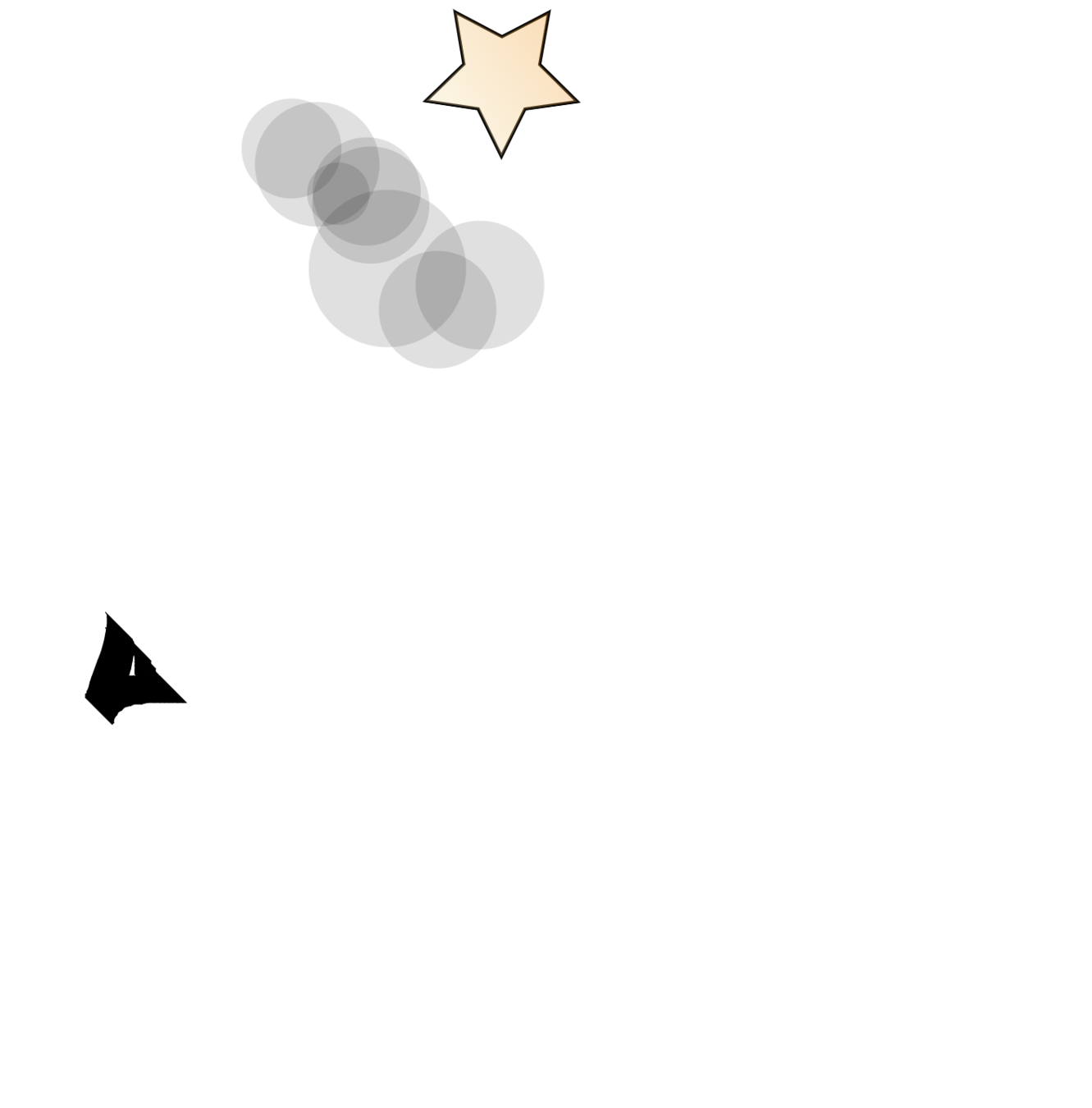
systematic errors

2.5

reproducible inaccuracy introduced by faulty equipment, calibration, or technique.
2.7 => 2.5 + ? +/- 0.1
- Measurements are taken at 22 C with a steel rule calibrated at 15 C. This is a systematic bias and not a systematic uncertainty
- Brightness is known, distance is estimated accordingly. In space interstellar dust can make sources dimmer, but not brighter. systematic uncertainty
Stochastic vs Systematics
| Statistical | Systematic |
|---|---|
| No preferred direction | Biases the measurement in one direction |
| Shrinks with the sample size (typically as ) | Affects the sample regardless of the size |
| Typically Gaussian or Poisson | Any distribution, including constant |
Precision vs Accuracy

Accuracy
Precision
SN are enable life in the Universe
SN are natural extreme physics laboratories
SN trace the evolution of the Universe



Reason to study Supernovae


100 Msun
0.08 Msun
mass
slow death fading away
explosive death
Twinkle twinkle little star
I'm aware of what you are
you are a glowing ball of gas
how you live depends on mass
Adapted from Prof. Viviana Aquaviva
luminosity
temperature
lives of stars




high initial mass
8-100 MSun
live fast and die in spectacular explosions
lives of stars



….. live to be old and die peacefully by slowly cooling down

low initial mass
0.1-8 MSun
lives of stars



low initial mass but with a sibling


even a low mass start will explode if its in a binary system and captures mass from the companion



lives of stars
explosions in the sky
how we study SNe
how we study SNe

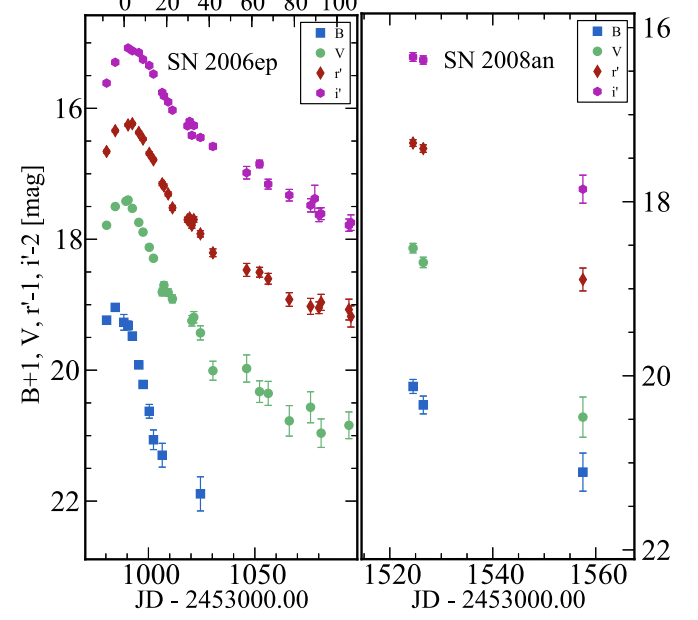
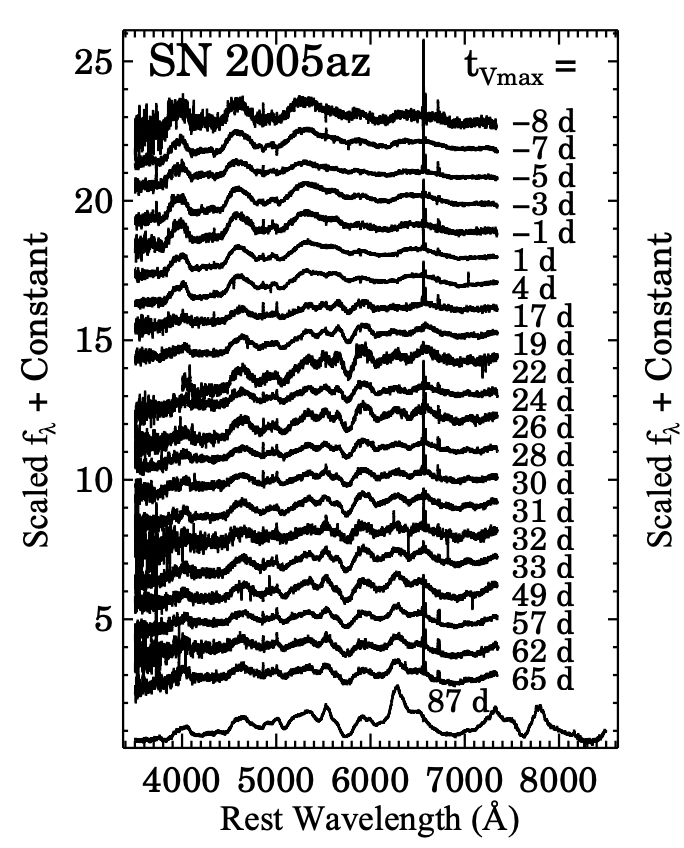

SN Ia cosmology


luminosity ~ time
Nobel Prize winning - SN Ia
S. Perlmutter
A.Riess, B. Schmidt

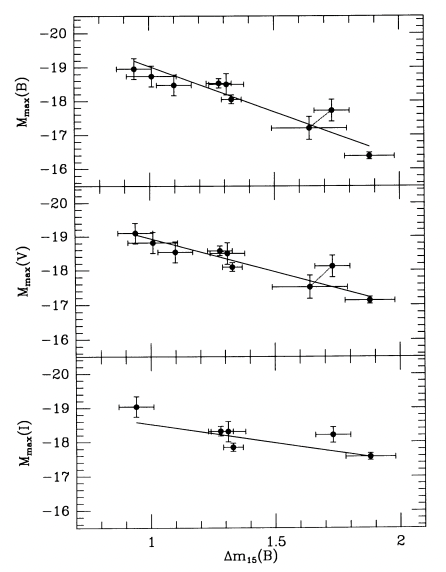

SN Ia are standardizable candles


SN Ia are standardizable candles


stretch
color
SN Ia are standardizable candles




Nobel Prize winning - SN Ia
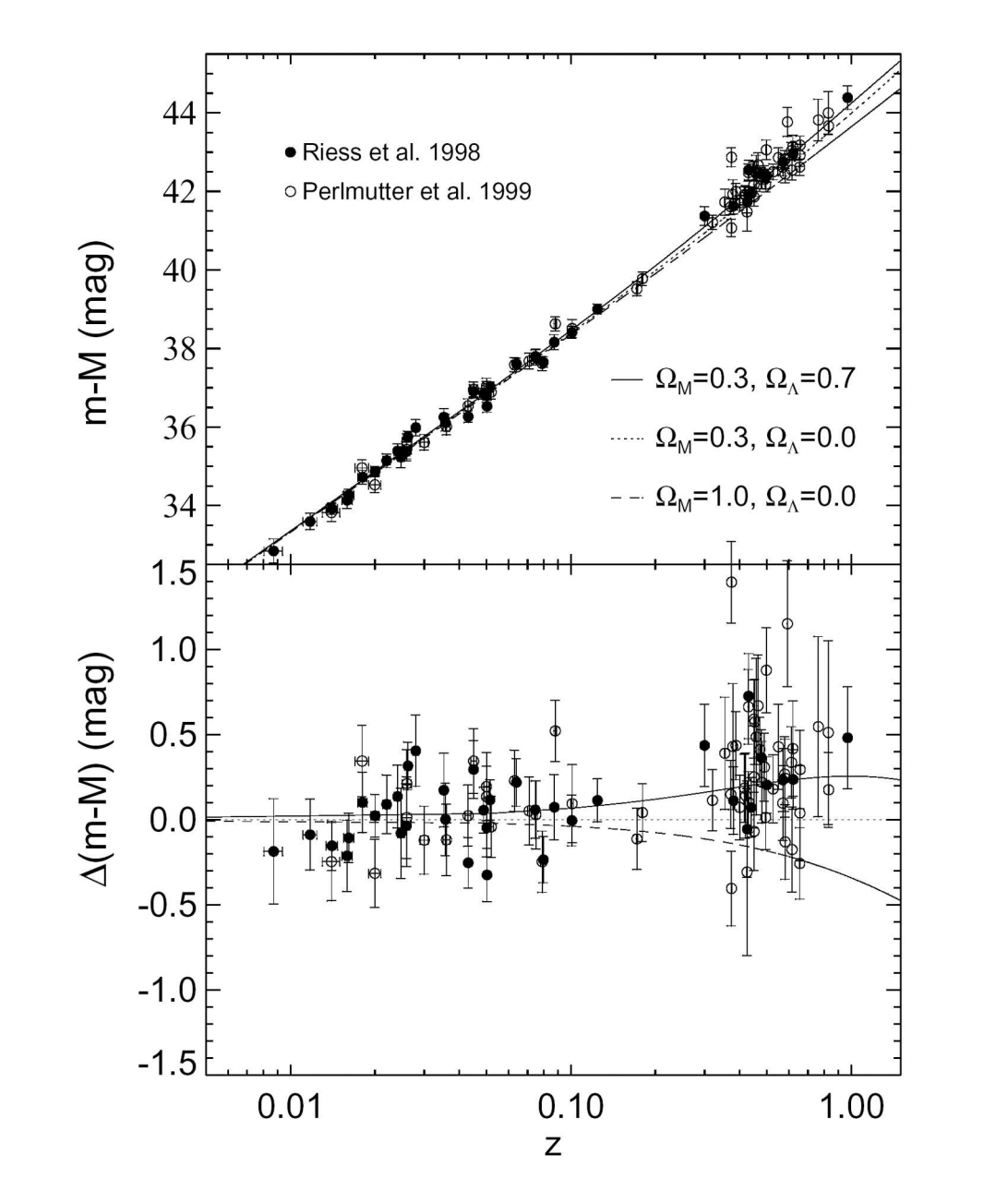

Hubble 1929
Nobel Prize winning - SN Ia


derived from SN Ia
derived from SN II
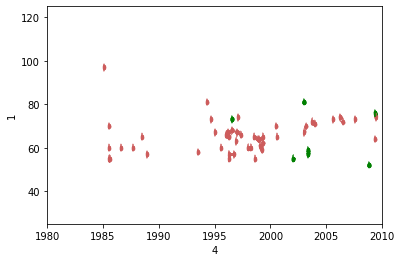
H0 measurements over time
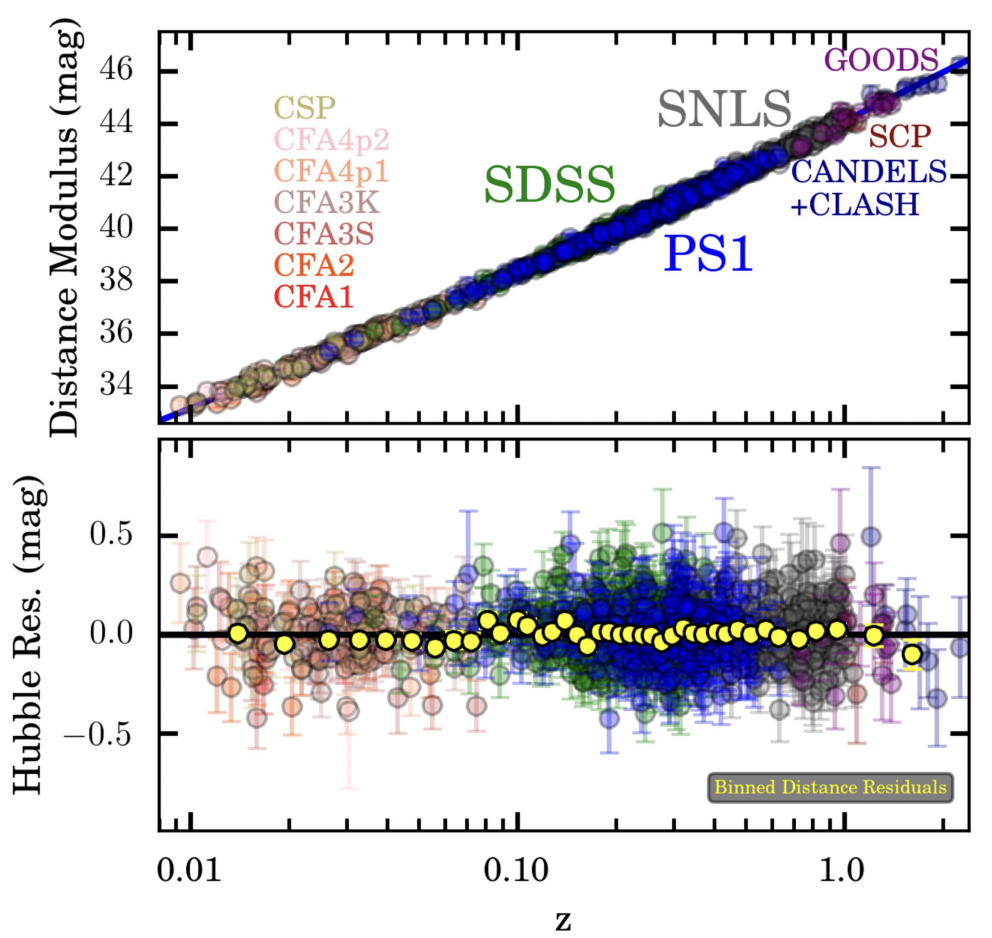
~1000 SNe
Systematics affecting SN cosmology

"The statistical and systematic uncertainties in recent SN Ia cosmology analyses have been roughly equal."
279 spectroscopically confirmed SNe
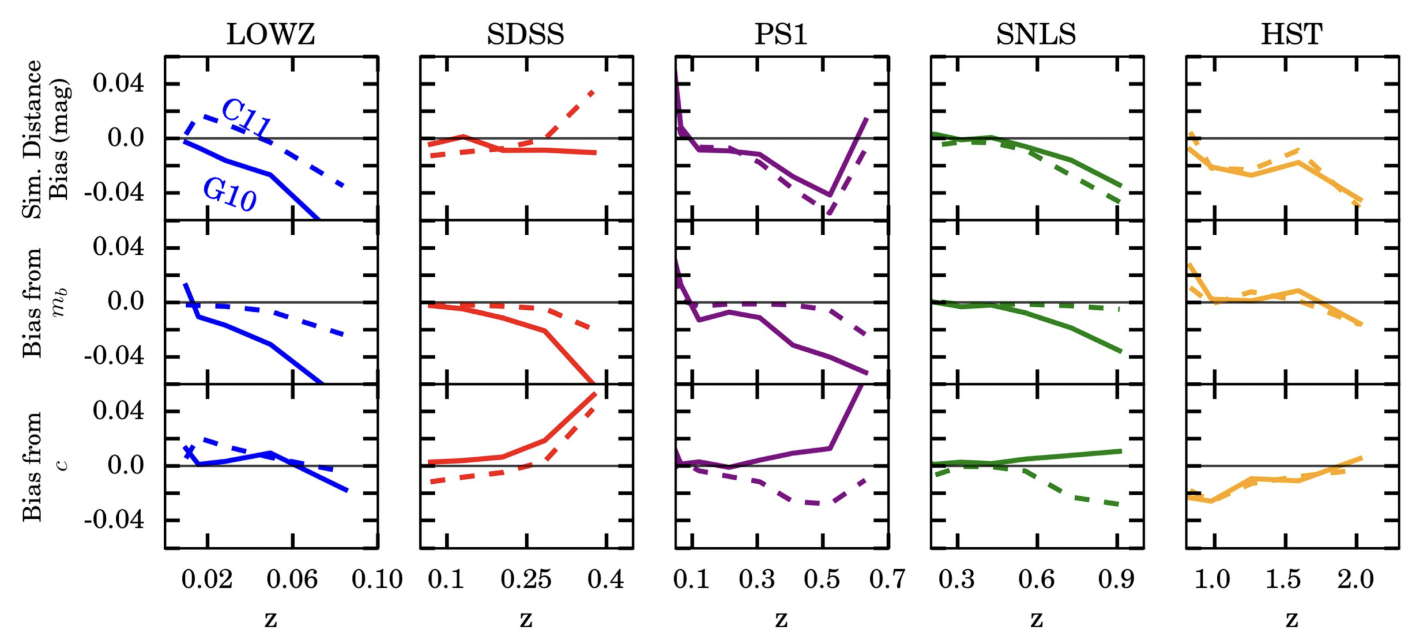





~1000 SNe

adapted from Freedman et al. 2017 & Perivolaropoulos and Skara 2022

z=2 =>8.2 billion years
What could explain the tension? (hint: at least 3 things)

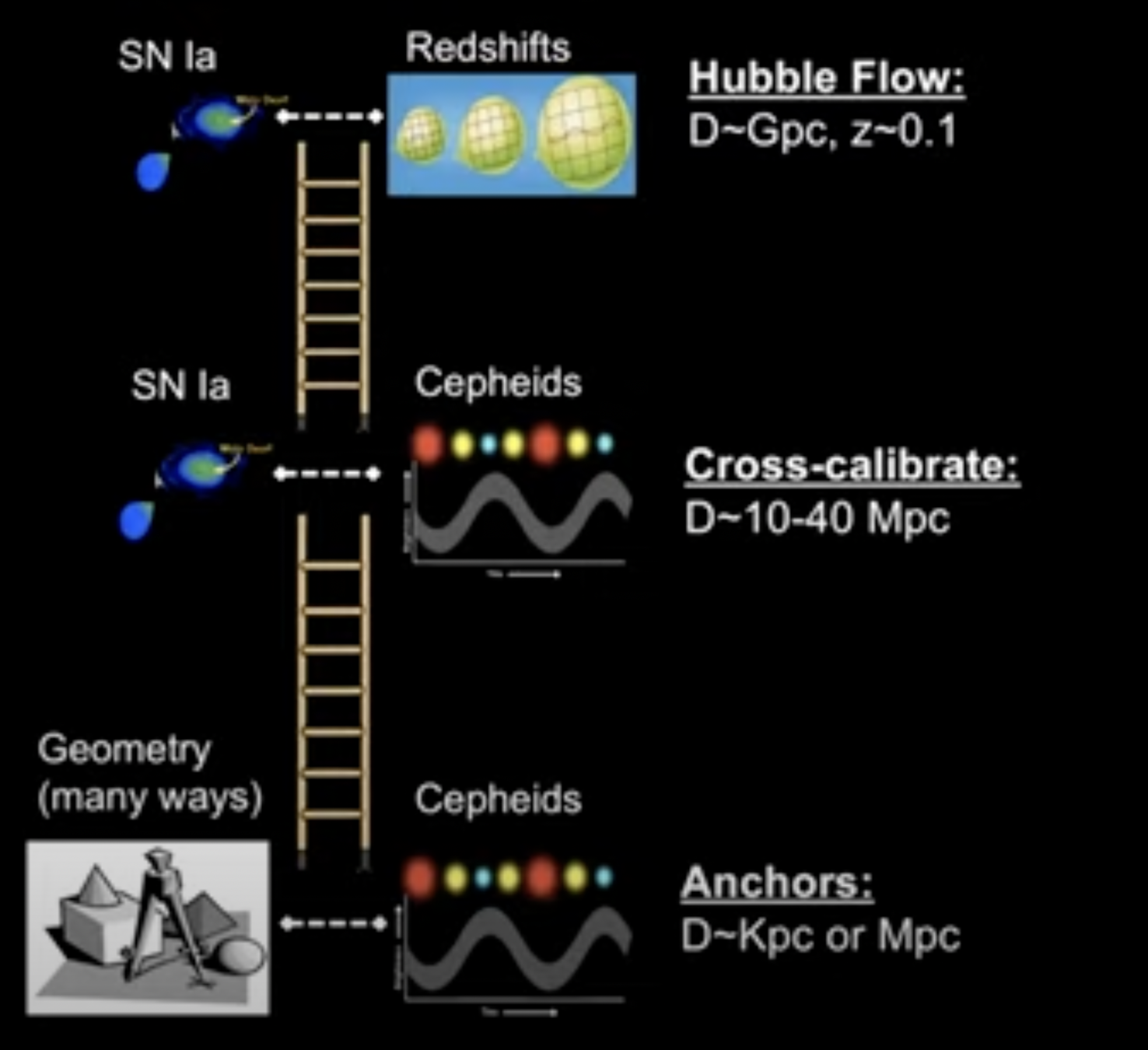
I : SN Ia cosmology
Sample Purity
I. Selecting the right SN types

Credit: Or Graur
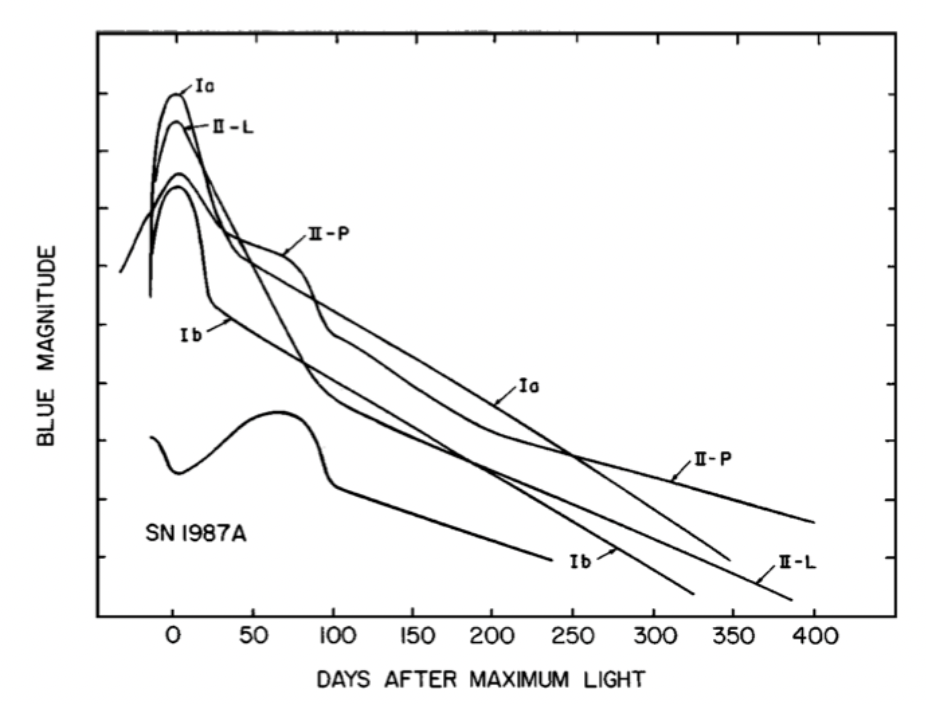
https://www.physics.rutgers.edu/analyze/wiki/Ia_supernovae.html
... but... not all SN Ia are equal after all
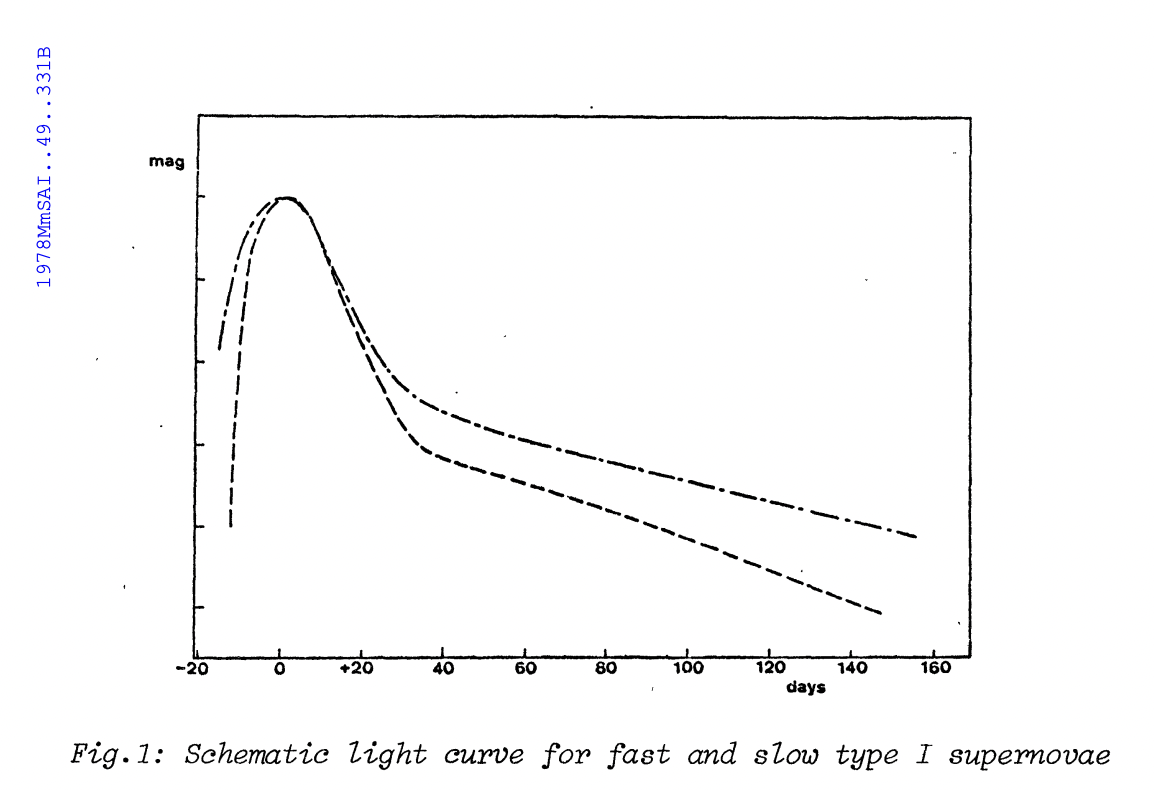
The fact that supernovae were not all the same was discovered early.. but its still one of our main issues with SN cosmology 45 years later!
Barbon, 1978
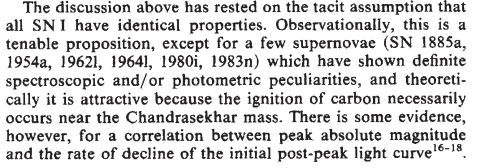
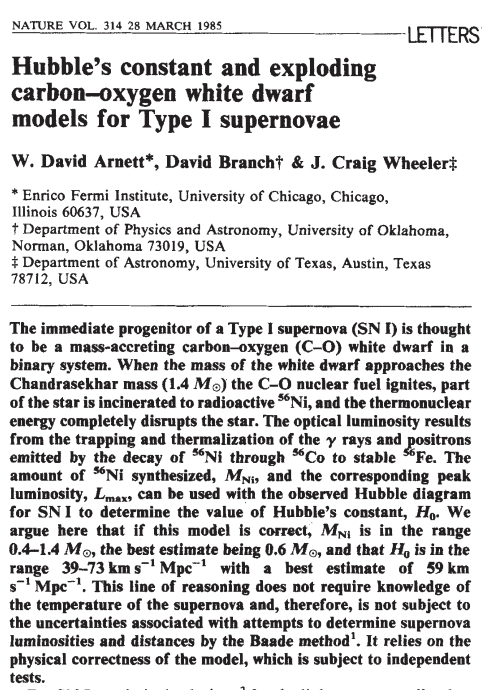
SN Ia come from the detonation of CO White Dwarfs.
Ignition of carbon occurs at or near the Chandrasekhar limit




SN Ia come from the detonation of CO White Dwarfs.
Ignition of carbon occurs at or near the Chandrasekhar limit




SN Ia come from the detonation of CO White Dwarfs.
Ignition of carbon occurs at or near the Chandrasekhar limit
... but... not all SN Ia are equal after all
Faint: SN 1991bg-like
Slow declining: SN 1991T-like
Rapid declining: SN2000cx-like (SN Iax)



Wikipedia Commons and Discover Magazine
What is the donor star in a SN Ia?
does it have an impact on the lightcurve evolution?
Double or single degenerate?
Bianco+ 2011
Double or single degenerate?

Kasen 2010: the progenitor does life a fingerprint in the lightcurve
2011fe: definitely double degenerate (Nugent+12)
PTF11kx: definitely single degenerate (Dildey+12)
<20% SD progenitors (Bianco+2011)
disfavors SD progenitors (Hayden+2010)
SN spectral classification
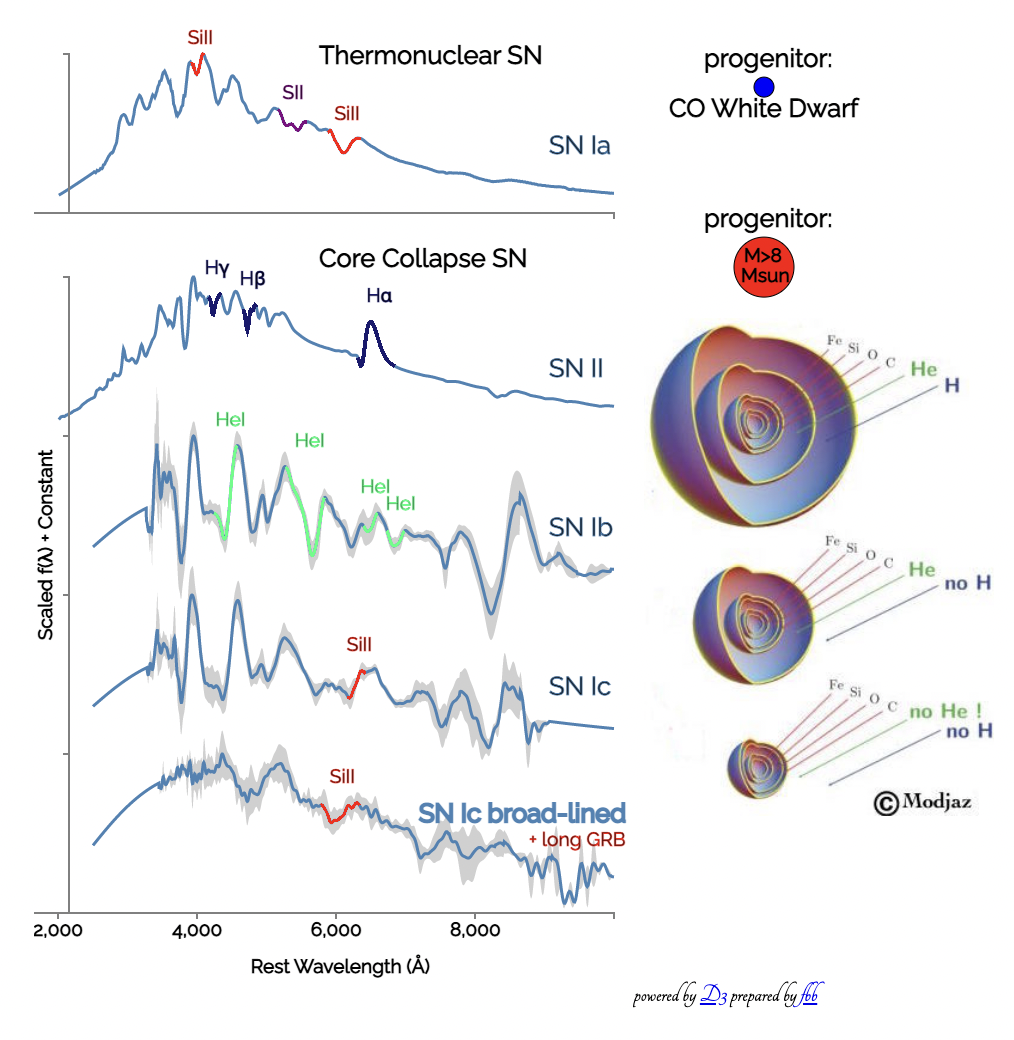
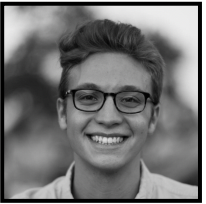
Alex Galgliano , University of Illinois
How accurate is the spectal classification?


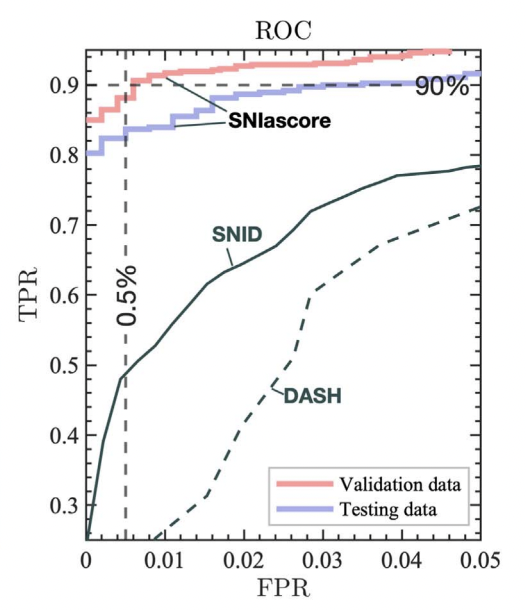

A specialized classifier to identify SN Ia from other SNe (and transients) can be very efficient
How accurate is the spectal classification?
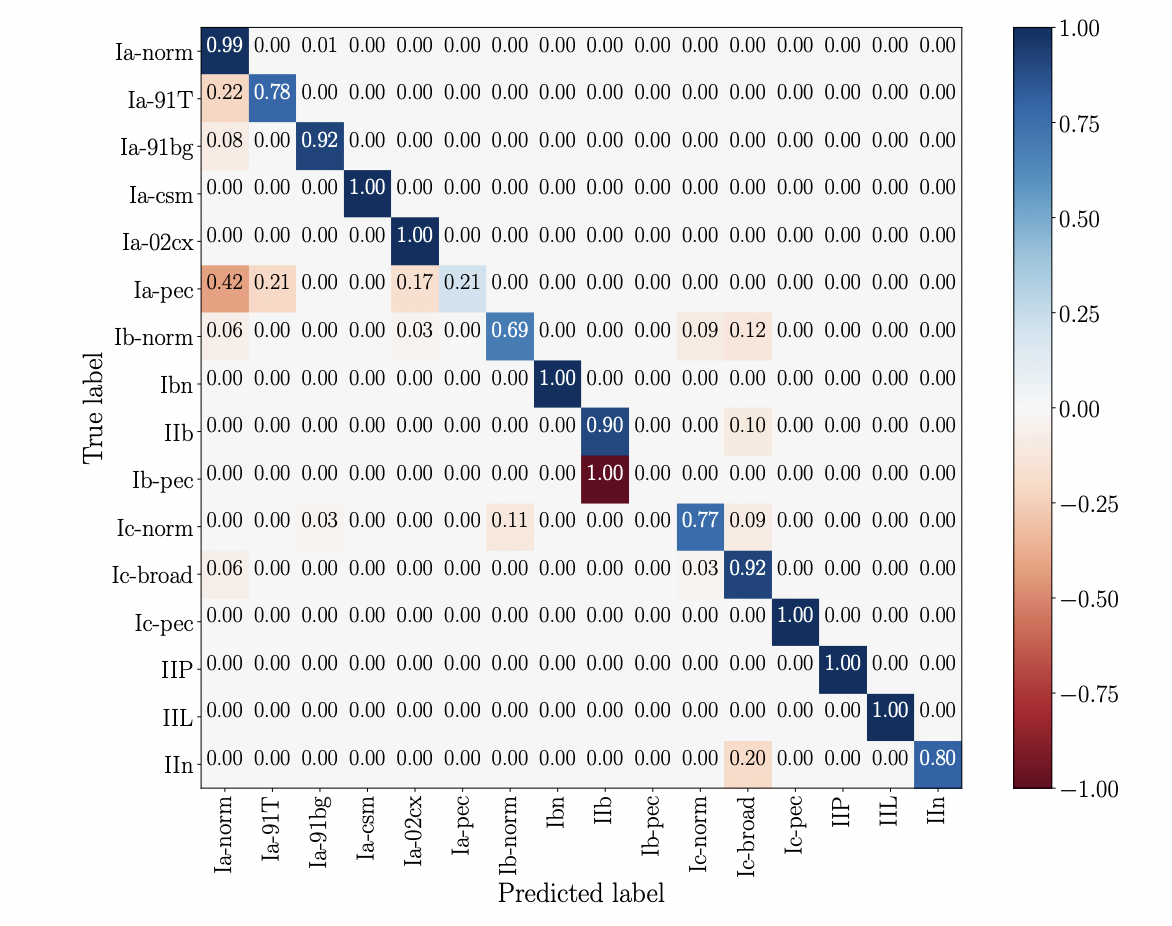
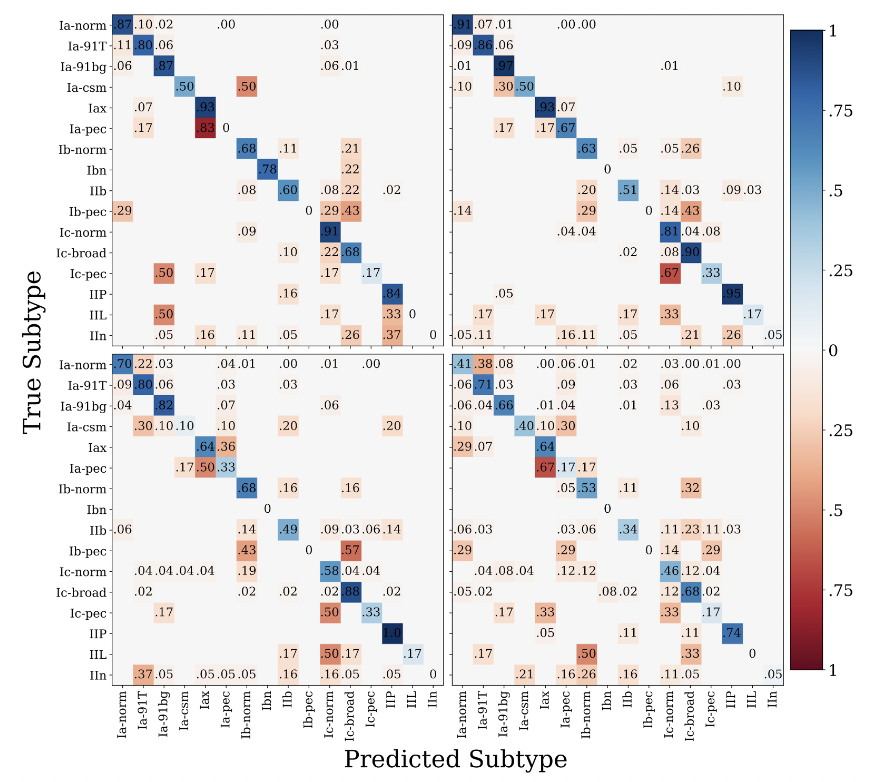



Willow Fox Fortino, UD
looking for the resolution limit for classification
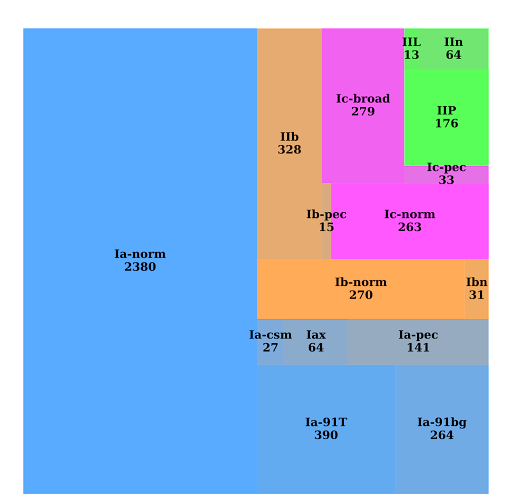
Class imbalance in the training sets is a problem that limits performance!
The SNID dataset that is used to train DASH

Willow Fox Fortino, UD
looking for the resolution limit for classification
II. Correcting for Host Systematics

II. Correcting for Host Systematics

- photometry
- host property dependency
- distance determination (photo-z)
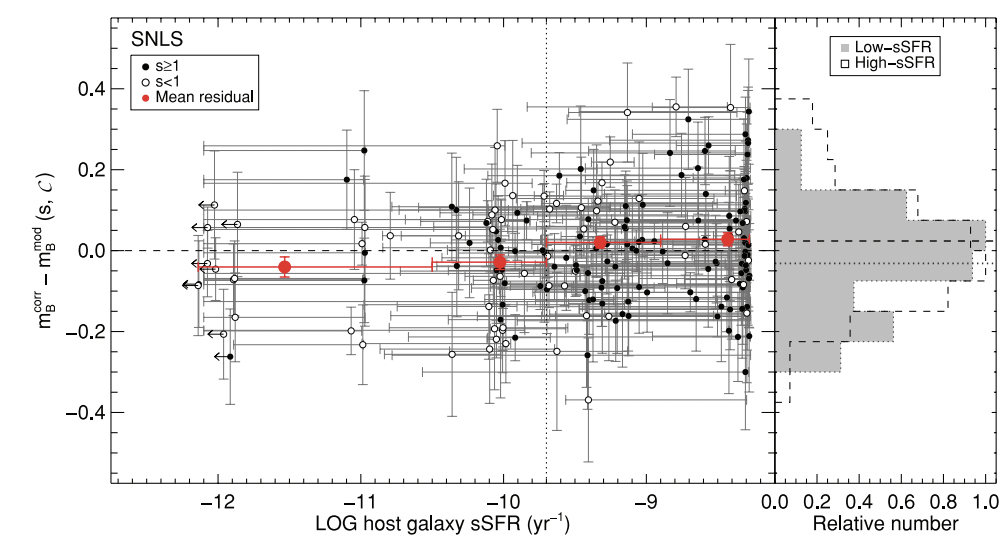

These is evidence of an explicit dependence of the SN luminosity on host galaxy

Specific reddening law can contaminate LC fitting

a mitigation is analysis in the NIR or joint analysis in NIR + optical

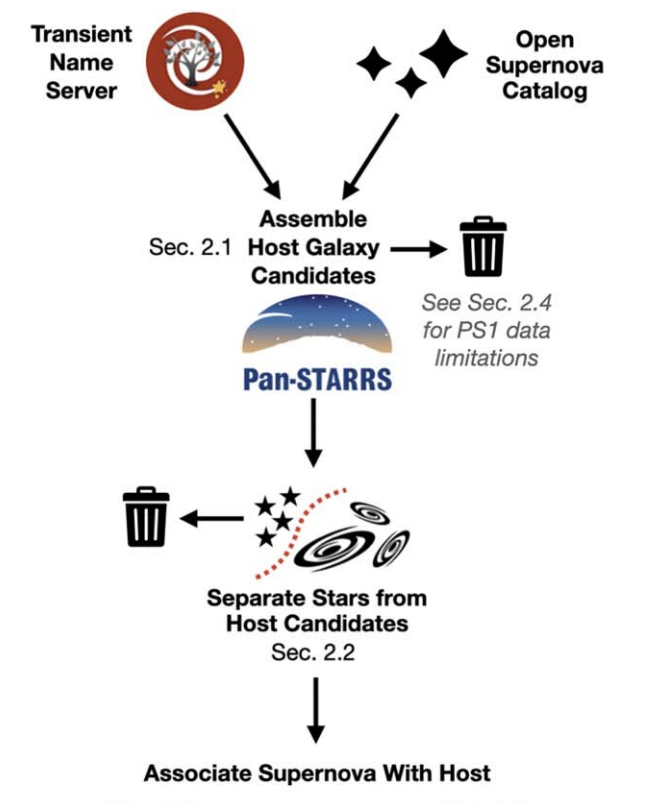
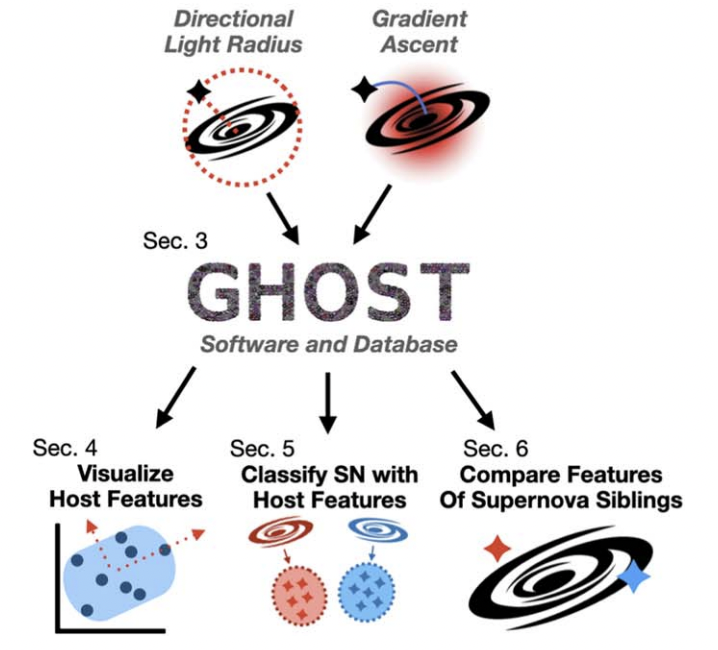
Integrating the information from the galaxy is critical to train new models correctly
low-z: cepheid stars ladder

First noted by Harietta Leavitt in 1912


The period of variation is proportional to the luminosity with a different proportionality at different wavelengths
Harietta Leavitt in 1912


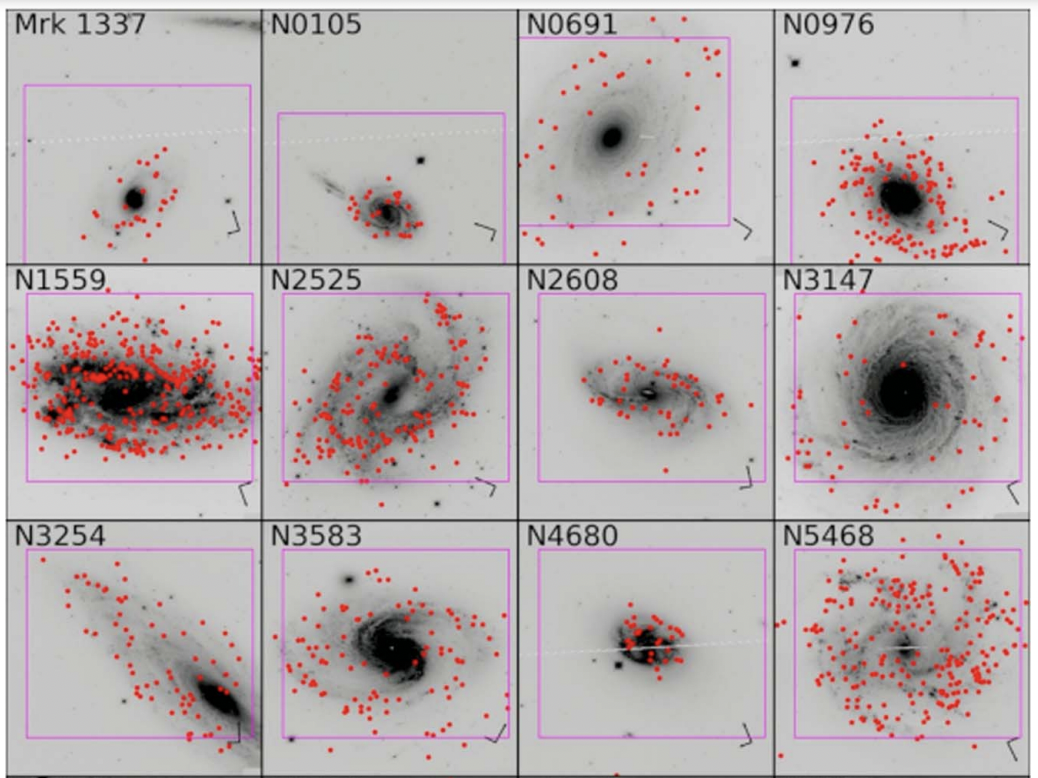
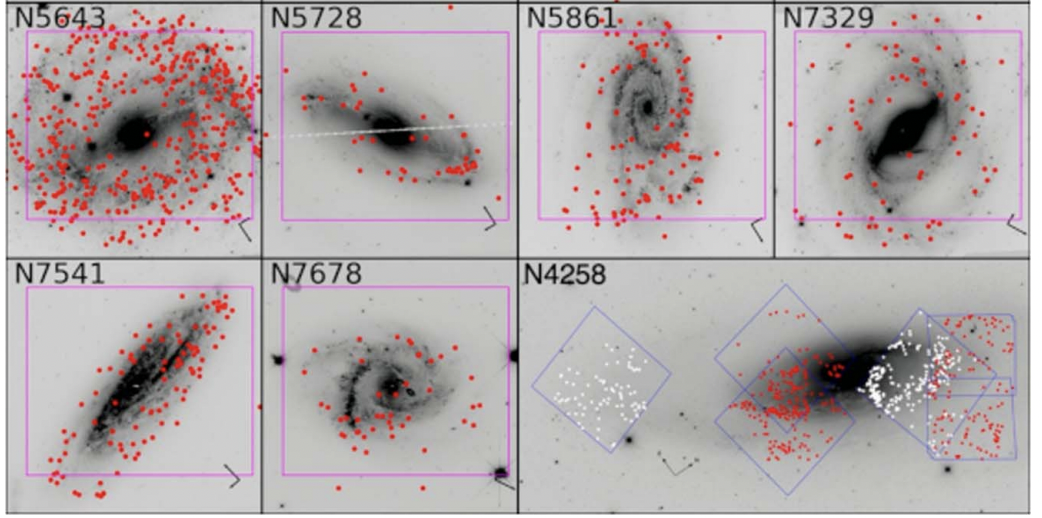
1566 Cepheids in the 19 SN Ia



drift scanning HST to measure parallaxes
precision of 20–40 μas
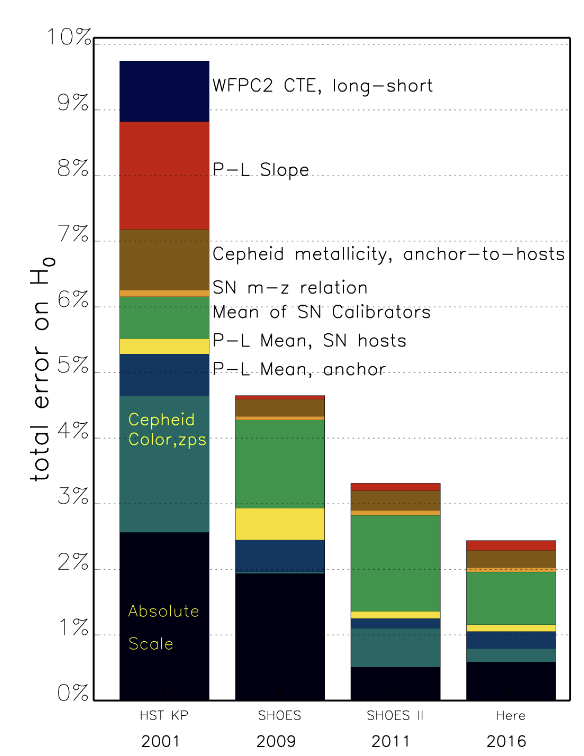
In the HST Key Project, the ladder was tied to our nearest galaxy, the Large Magellanic Cloud (LMC). SH0ES reduced this uncertainty by tying their calibration to Cepheids with parallaxes in the Milky Way (MW), Cepheids in the LMC, and Cepheids in host galaxy NGC4258 ( Type 2 Seyfert, and a Type II supernova).

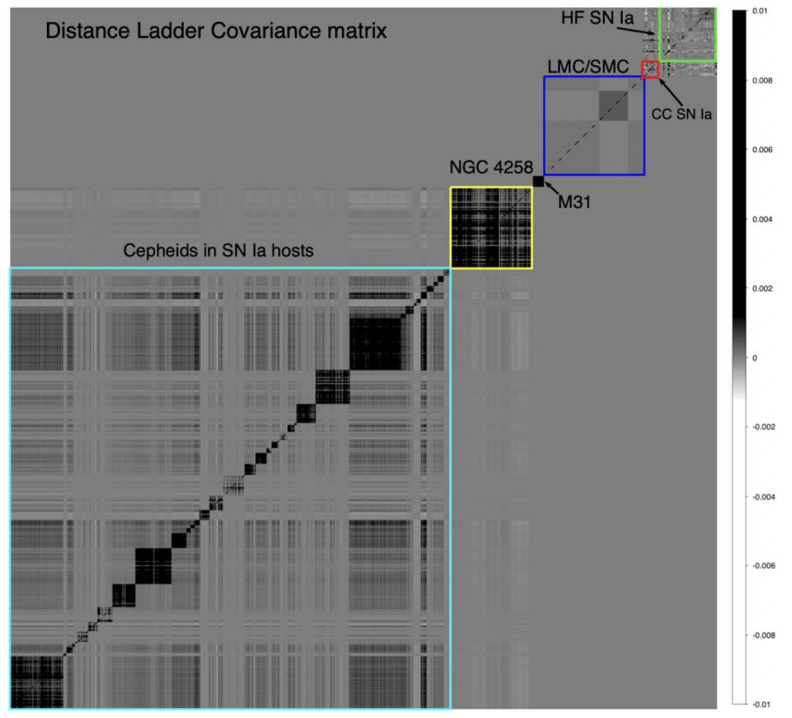
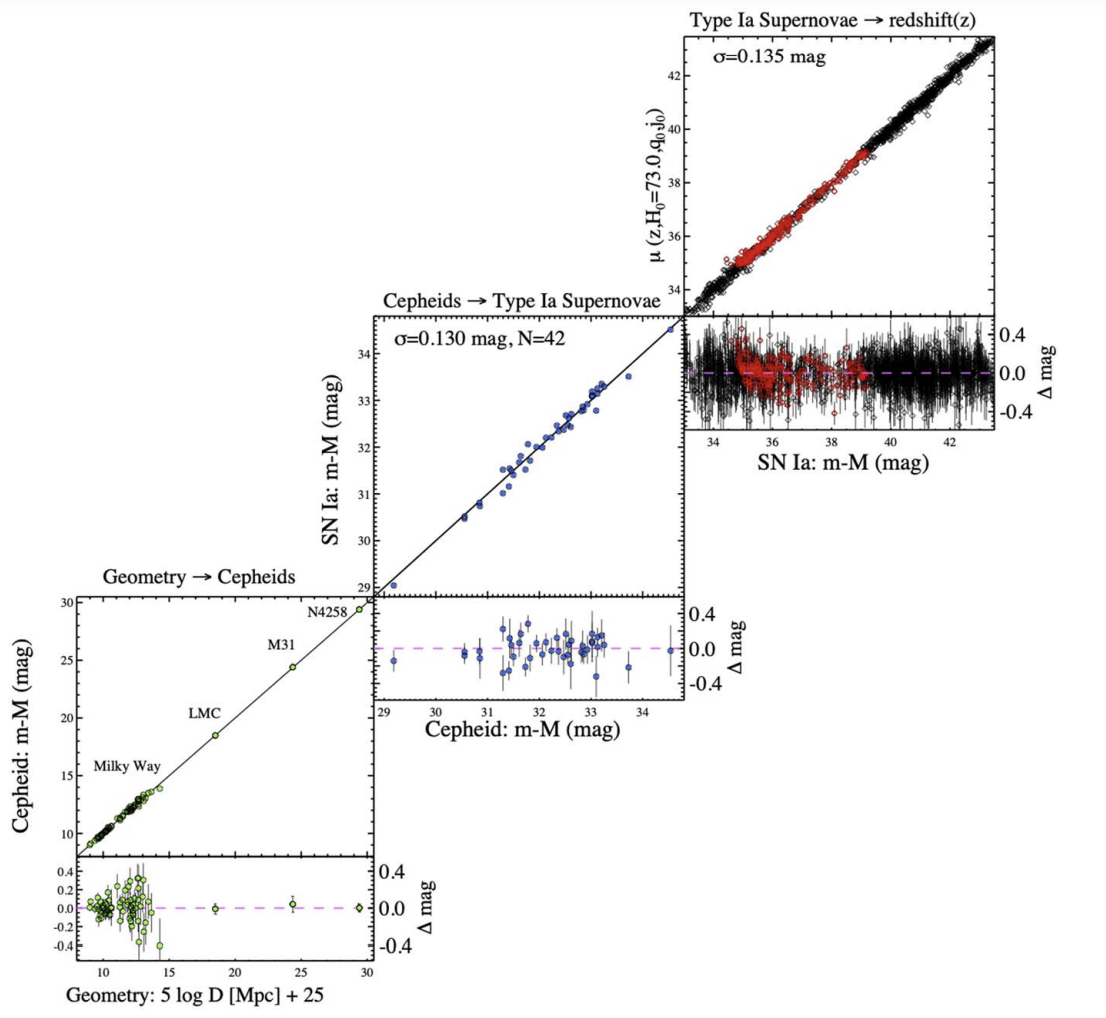
~1000 SNe
Beaton et al. 2016

~1000 SNe

Beaton et al. 2016
~1000 SNe
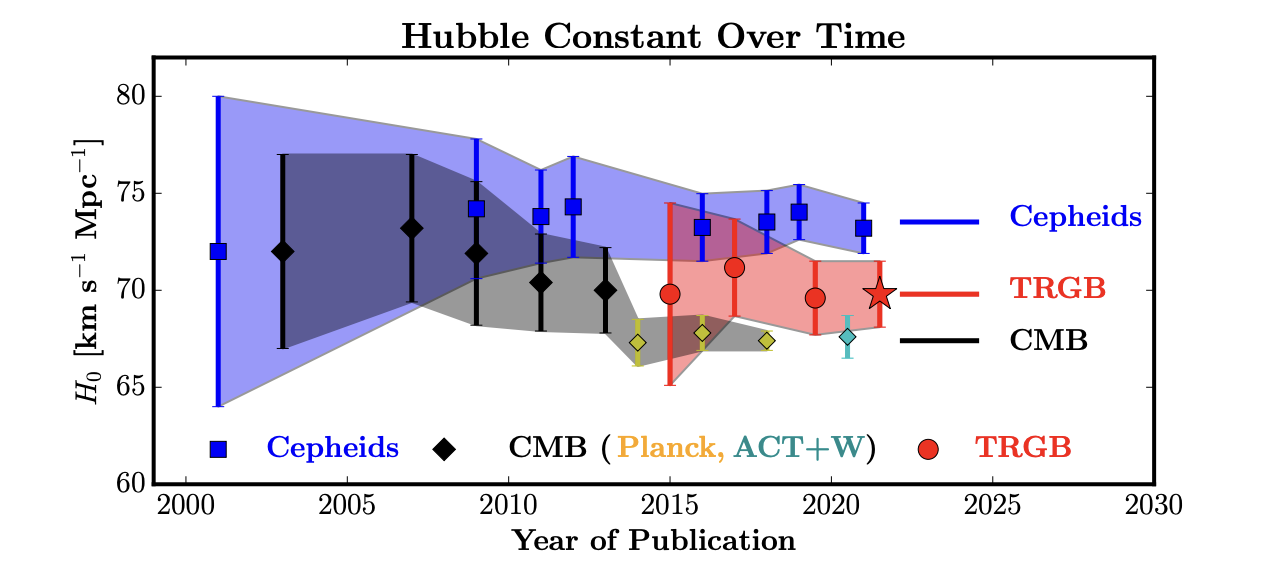

If its a calibration problem maybe a better method and a better telescope will help... here comes the Just Wonderful Space Telescope (JWST)
higher-z: Cosmology with other SN types

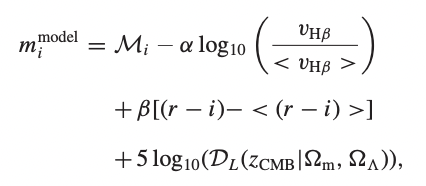
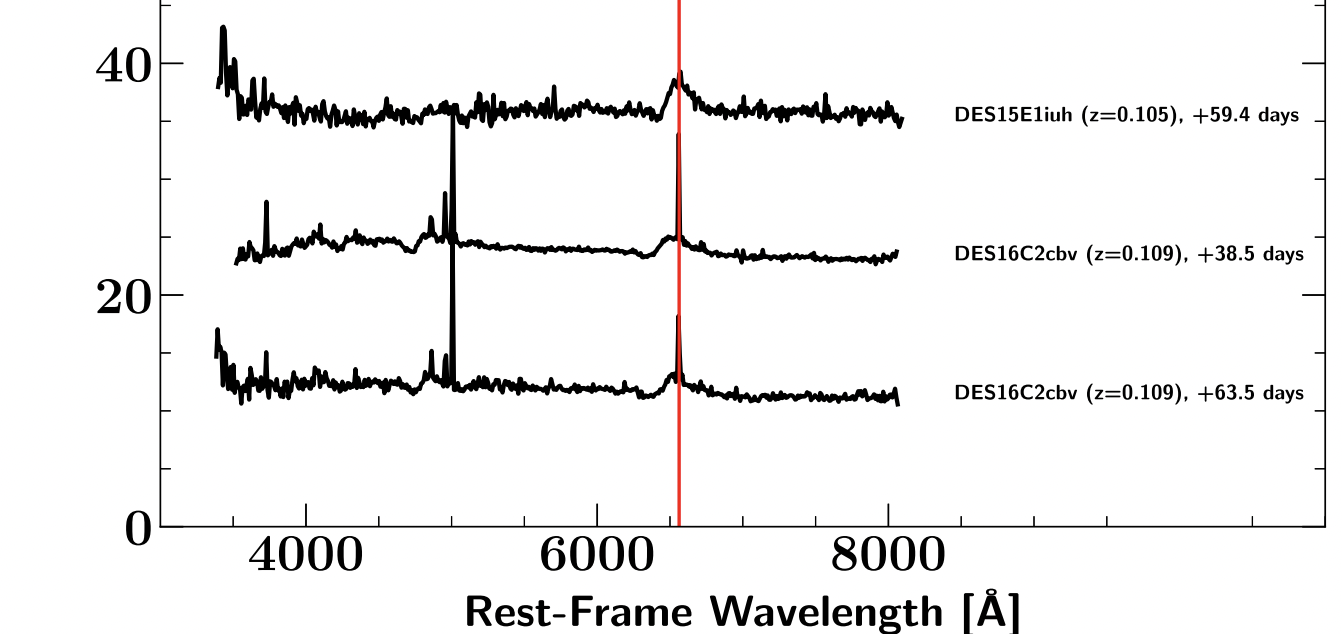
The standard candle method for SNII is an empirical method based on the observed correlation between SN II luminosity and photospheric expansion velocity during the plateau phase - with color corrections

2020 MNRAS

higher-Z :
GRB

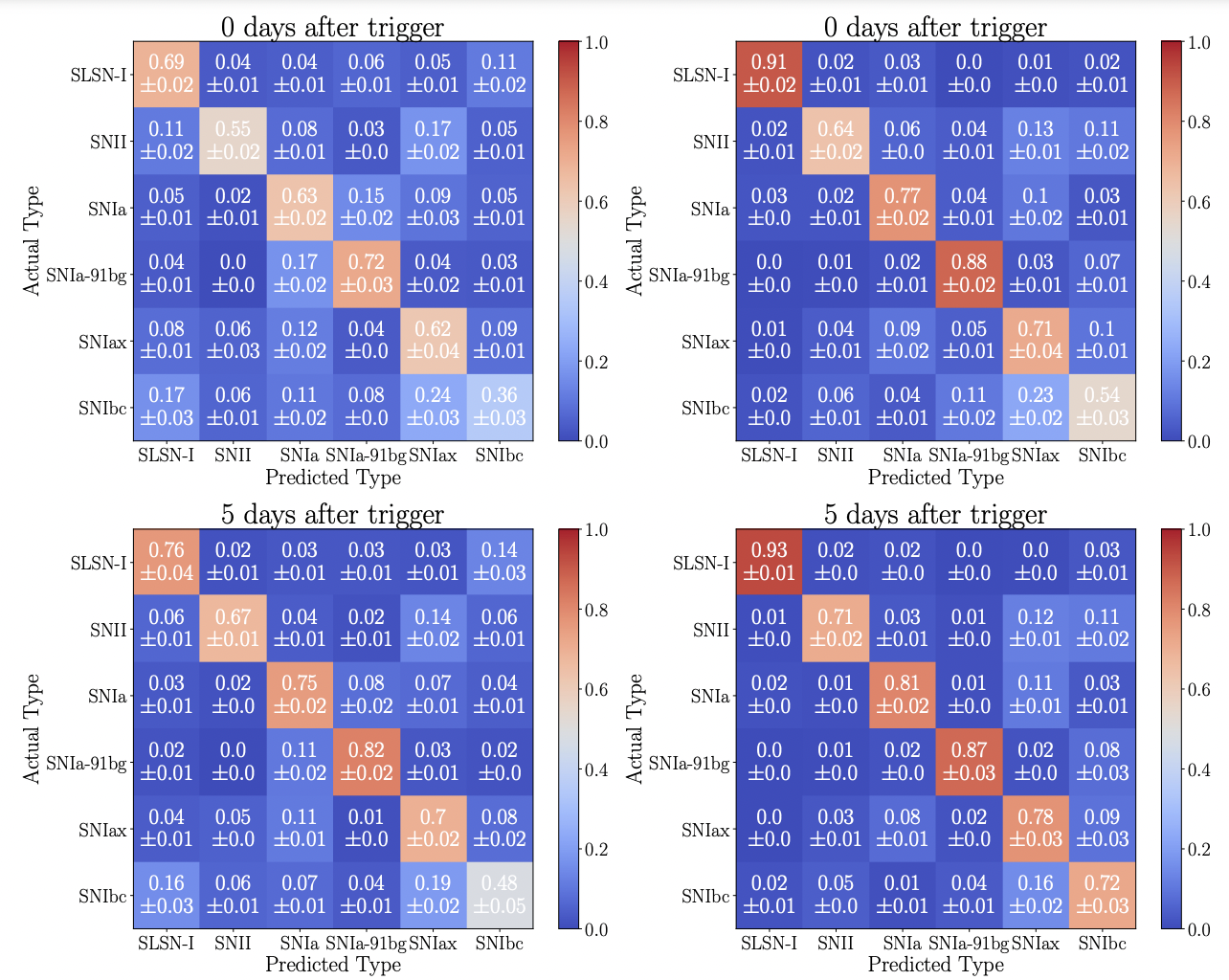

High accuracy classification can be obtained from photometry for SN Ia vs not Ia, but only if redshift is known

Highly energetic explosions out to redshift~9
- short gamma ray emission
- long(er) afterglow
- long GRBs: related to SNe (SN Ic-BL)
- short GRBs: related to NS mergers
GRB have been detected to z~9!



Amati+ 2019
Cardone+ 2009
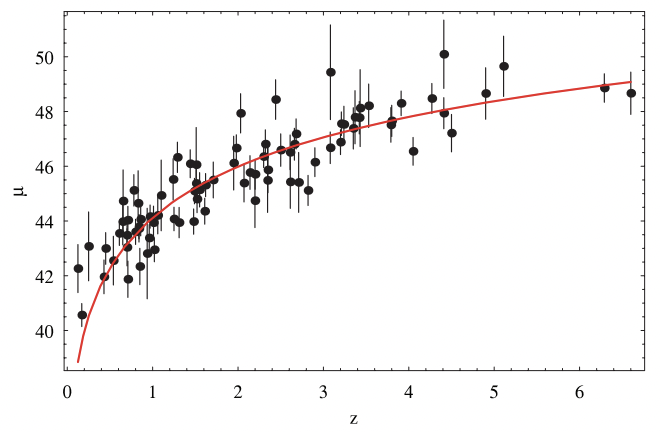
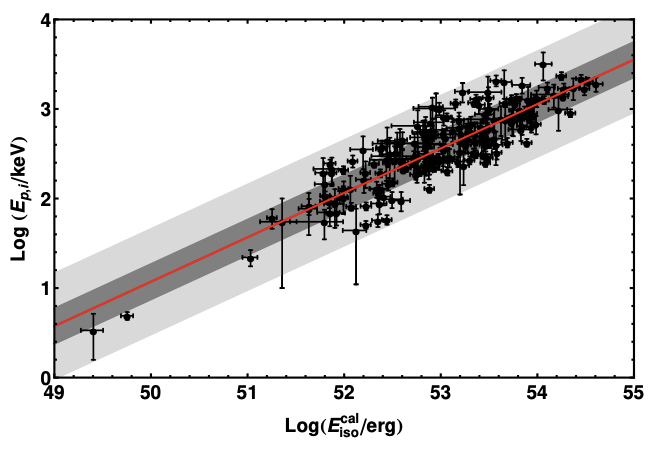
modeling the Sp requires cosmological model assumption: known as the "circularity problem"
Kilonovae



LIGO Virgo Arrays
meters - this is 1000 times smaller than the diameter of a proton
Electromagnetic emission: Kilonova

MMA in the next decade
federica bianco - fbianco@udel.edu

@fedhere

LIGO/VIRGO area of localization ~100deg square
Ursa Minor contains 255.86 square degrees
S190425z 18% of the sky localization

federica bianco - fbianco@udel.edu

@fedhere

AT 2017gfo (SSS17a)
optical counterpart we have identified near NGC 4993 is associated with GW170817
(but also Abbott+2017, Drout+2017...... )
Evidence that mergers of NS are significant sources of r-process elements heavier than iron, including gold and platinum, which was previously attributed exclusively to supernova explosions
MMA
The source distance DL is inferred directly from the GW signal while its redshift z is obtained from an electromagnetic (EM) counterpart.
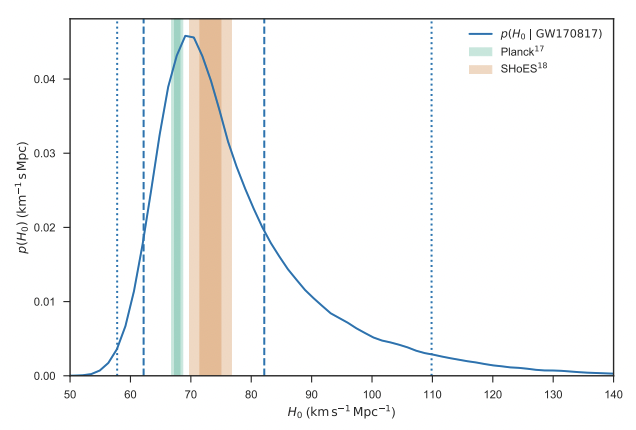

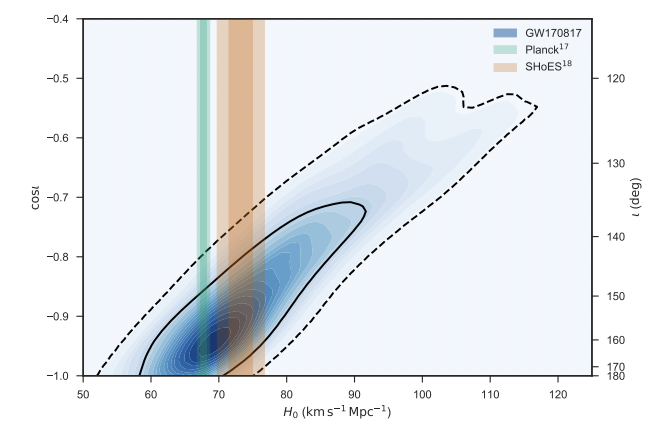



Μerger inclination is the main source of uncertainty
Text
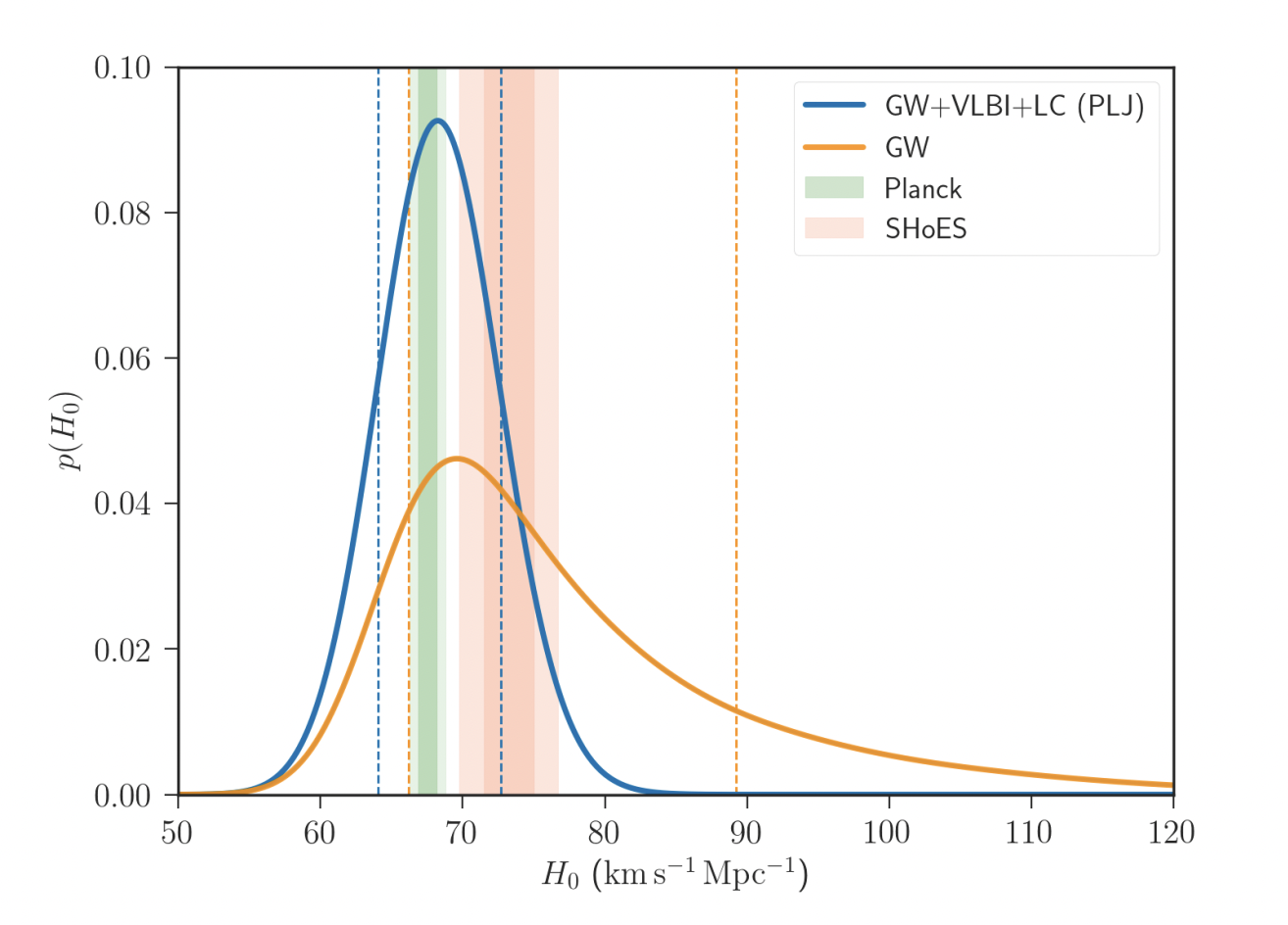
~1000 SNe

Std Sirens+EM

Di Valentino [2011.00246]
{
{
SN
CMB
SN
discrepancy ~5sigma
need a 20% mag correction on SNe to reconcile

Di Valentino [2011.00246]
thank you!
University of Delaware
Department of Physics and Astronomy
Biden School of Public Policy and Administration
Data Science Institute

@fedhere
federica bianco
fbianco@udel.edu
Rubin Observatory Construction Project
LSST Transient and Variable Stars Science Collaboration